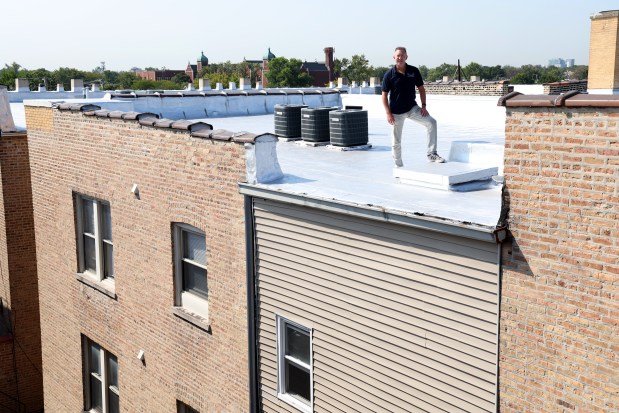Hundreds of Cook County landlords each year are taking advantage of a property tax incentive designed to preserve and create affordable housing. The participating landlords are spread throughout Chicago and nearby suburbs, with the densest concentrations on the city’s South and West sides, especially neighborhoods considered ripe for gentrification such as South Shore.
Some property owners, concerned about getting ensnared in a bureaucratic maze, were initially hesitant to join the program, but now say the incentives help keep units affordable and pay for needed renovations.
“I didn’t apply the first year it came out because the whole program seemed confusing, but it wasn’t that bad,” said Jon Womack, managing partner of Third City Properties. “It’s taken a little bit of work, but it’s definitely been worth it.”
Called Affordable Illinois when signed into law by Gov. JB Pritzker in summer 2021, it allows owners of existing buildings with seven or more units anywhere in the county to secure cuts to the assessed values of their properties, which reduces the tax burden, if they provide affordable apartments and make substantial renovations.
Affordable Illinois does more than assist renters in existing buildings. Apartment developers in high-income areas such as Fulton Market can secure deep assessment cuts for new buildings if they agree to keep 20% of the units affordable for 30 years. A dozen developers have either completed and leased up such properties or signed letters of intent for upcoming projects.
Womack secured approval in 2023 from Cook County Assessor Fritz Kaegi to add three properties in the Austin neighborhood on the West Side to the program, including 1607 N. Central Ave. a mixed-use building with 31 apartments and four commercial units. Womack pledged to reserve 15% to 35% of the units in the three buildings as affordable, and completed a set of renovations, including new roofing, sidewalks, HVAC systems and plumbing, and interior repairs. In return, the company gets assessment cuts of up to 35%.
“It would have been hard to keep all the rents below market, but the property tax relief is worth more than the lost rent,” Womack said.
Giving tax breaks to owners who preserve affordable units is cost-effective, said John McDonnell, director of multifamily development for the Cook County assessor.
“We have a lot of 10-, 20- and 30-unit apartment buildings that have been around forever, where it only costs about $50,000 to renovate each unit and keep them in good condition, instead of the $400,000 it costs to create new units,” he said.
Apartment developers in high-income areas completed two projects in 2023 that successfully leased their affordable units and secured assessment cuts. Related Midwest finished The Row Fulton Market, a 300-unit tower, including 60 affordable units, at 164 N. Peoria St. in Fulton Market, the city’s hottest rental market. Moceri + Roszak completed Fulbrix Apartments, a 28-story, 375-unit apartment building nearby at 160 N. Elizabeth St.
Developers of 10 future apartment complexes signed letters of intent to set aside 20% of their units as affordable, added McDonnell. The assessment cuts taper off and end after 30 years.
“For that, the city gets 30 years of affordability in these nice, new developments,” he said.
The assessor began administering the program in 2022, accepting nearly 600 landlord applications, the majority seeking 35% cuts in the assessed value of their properties. The office approved another 221 in 2023, and 102 through July of this year. The initial burst of properties accepted in the program’s first year was partly due to many landlords switching from an outmoded incentive program called Class 9, McDonnell said.
“New downtown buildings get all the headlines, but for the owners of existing courtyard buildings in neighborhoods on the South and West sides, or in Rogers Park or Albany Park, this program also works for them,” said Stacie Young, president and CEO of Community Investment Corp., a nonprofit lender, especially because it doesn’t impose a lot of rules and regulations.
“Creating affordable housing usually means going to the government and getting direct subsidies, and that’s a long, complicated process that takes a bit of sophistication,” she said. “But the assessor’s office doesn’t make you go through 5 feet of paperwork. You just fill out the application, show you are in compliance and get the benefit.”
More than 100 new applications are waiting for approval, said McDonnell, which puts 2024 roughly on pace with 2023.
“I feel like the best is yet to come for this program, and it could become a national model,” he said.




